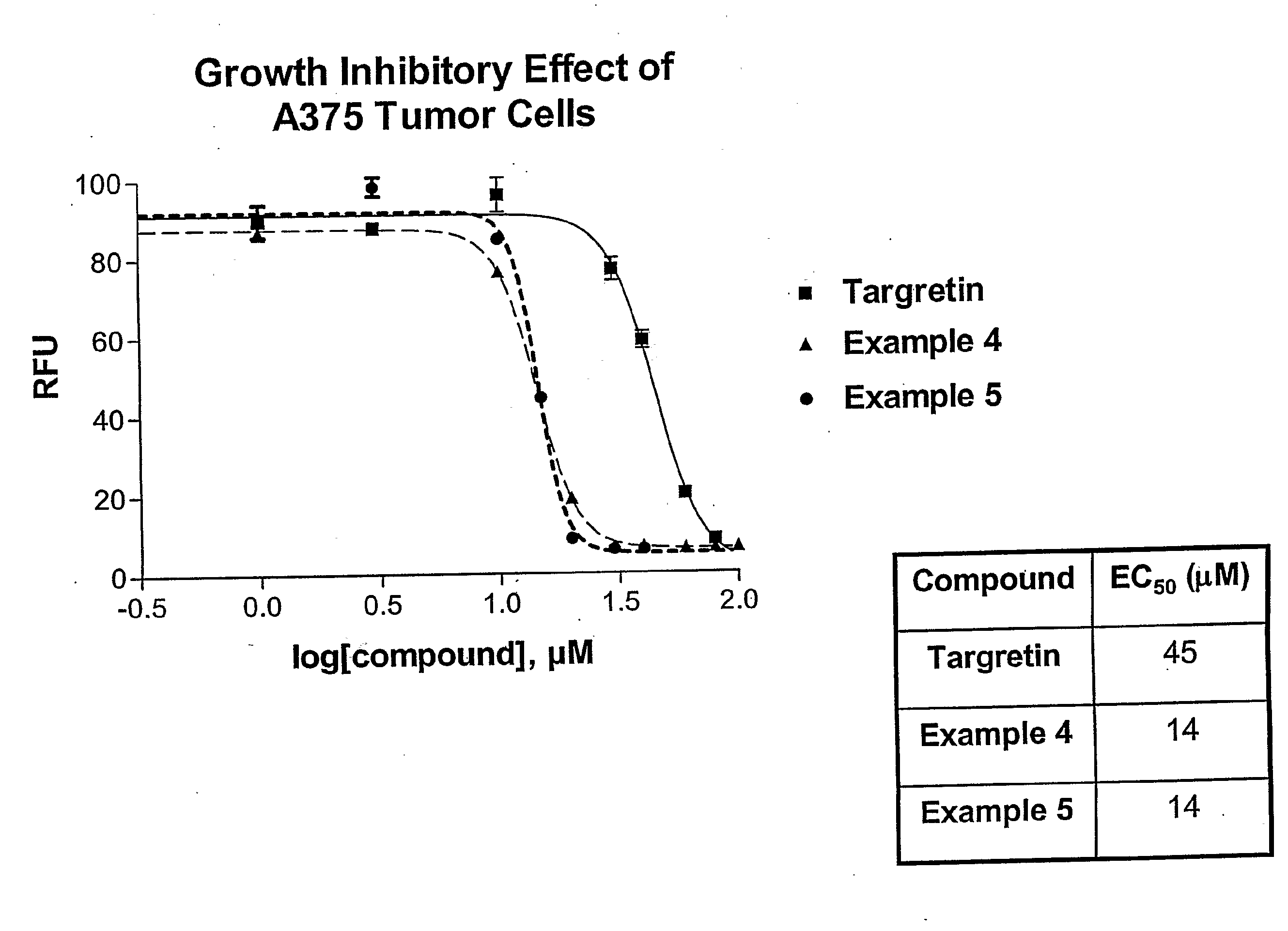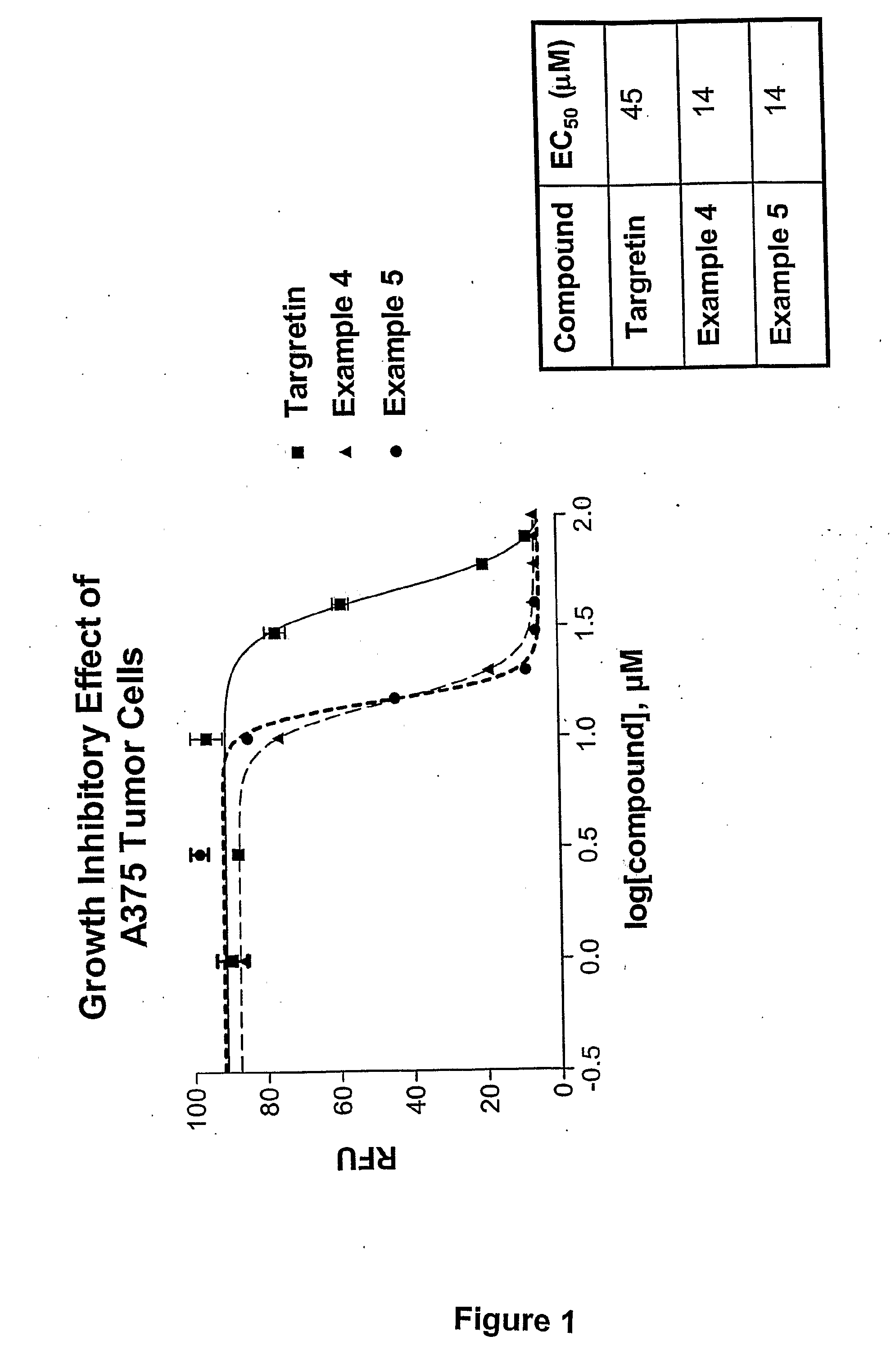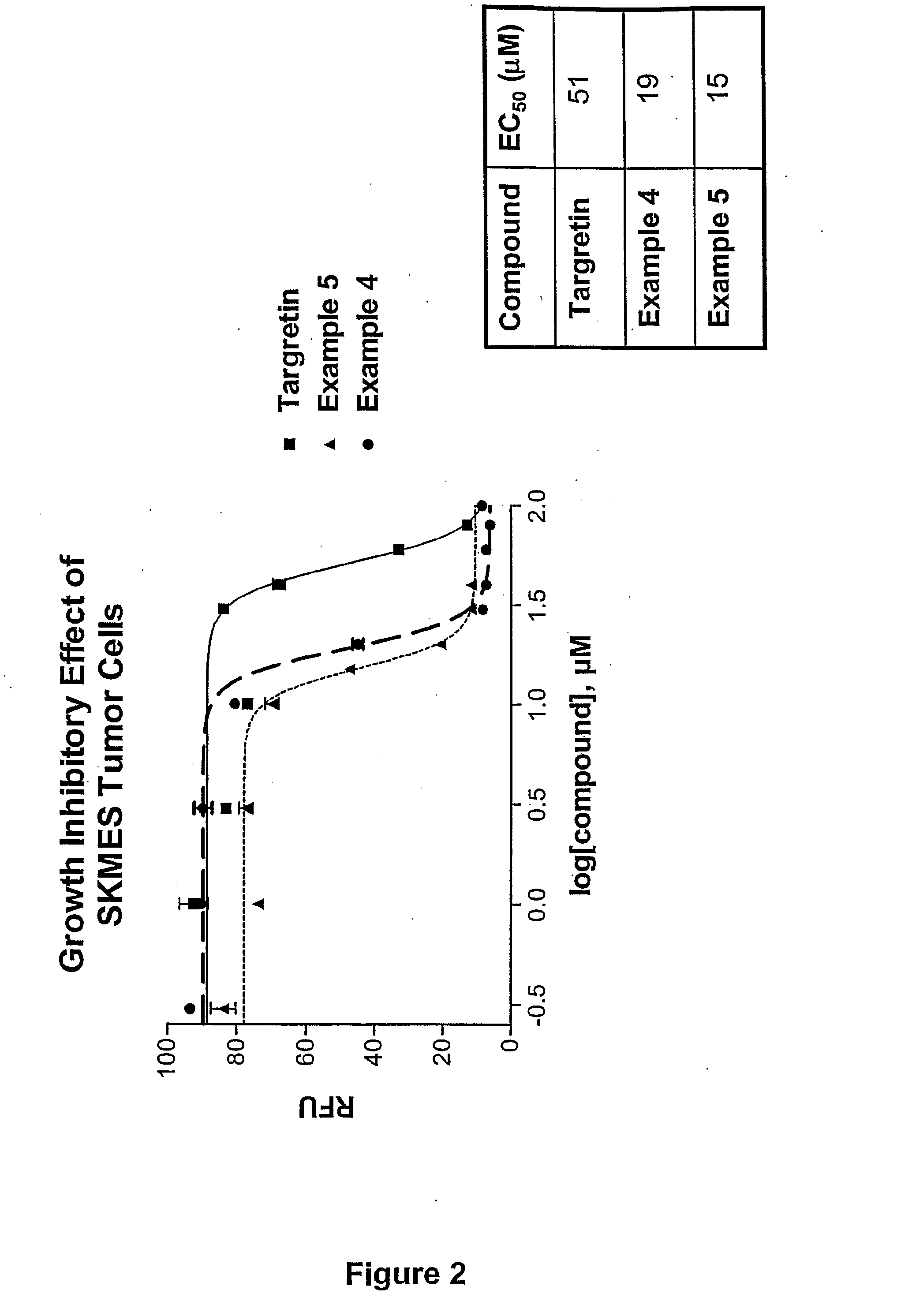Novel Therapeutic Agents for the Treatment of Cancer, Metabolic Diseases and Skin Disorders
a technology of retinoids and retinoids, applied in the field of new retinoids, can solve the problems of single selective therapy, unfavorable single-selective therapy, and number of undesirable side effects
- Summary
- Abstract
- Description
- Claims
- Application Information
AI Technical Summary
Benefits of technology
Problems solved by technology
Method used
Image
Examples
example 1
1,1,4,4,6-pentamethyl-1,2,3,4-tetrahydronaphthalene
[0171]
[0172]To 2,5-dimethyl-2,5-hexanediol (10 g, 68.5 mmol) in a 500 mL flask was added reagent grade concentrated HCl (150 mL) and the solution was stirred at ambient temperature for 1 h. Water (100 mL) and CH2Cl2 (100 mL) were then added slowly and the layers were separated. The aqueous layer was washed with additional CH2Cl2 (100 mL). The combined organic layers were dried over MgSO4 and filtered thru silica gel pad. The solvent was removed to yield 10.9 g (87%) of 2,5-dichloro-2,5-dimethylhexane. The dichloride was dissolved in 150 mL of CH2Cl2 and 9.6 mL of toluene (90 mmol) was added. AlCl3 (390 mg, 2.9 mol) was added in portions over 5 min at ambient temperature. HCl is evolved and the solution turns dark red. The reaction was placed in an ice-bath and quenched with deionized water (120 mL). Hexane (150 μL) was added and the organic layer was removed. The aqueous layer was washed with additional hexane (150 mL). The combined...
example 2
(4-iodophenyl)-(3,5,5,8,8-pentamethyl-5,6,7,8-tetrahydronaphthalen-2-yl)-methanone
[0176]
[0177]1,1,4,4,6-pentamethyl-1,2,3,4-tetrahydronaphthalene (2.02 g, 10 mmol) and 4-iodobenzoyl chloride (2.66 g, 10 mmol) were dissolved in 20 mL of CH2Cl2 and cooled to 0° C. using an ice-water-NaCl bath. Anhydrous AlCl3 (4.0 g, 30 mmol) was added in portions at over 5 min. The reaction mixture was allowed to stir at 0° C. for 5 min. The reaction was quenched by slow addition of ice at 0° C. The mixture was diluted with water and 150 mL of EtOAc was added and the layers were separated. The aqueous layer was washed with additional EtOAc (150 mL). The combined organic layers were washed with water (200 mL) and brine (50 μL) and dried over Na2SO4. The filtrate was concentrated in vacuum to yield a white solid and that was recrystallized from CH3OH (10 mg / mL) to afford the product as white crystalline solid.
[0178]Yield: 3.04 g (71%). 1H-NMR (CDCl3,) δ ppm: 1.2 (s, 6H), 1.3 (s, 6H), 1.7 (s, 4H), 2.3 (...
example 3
6-[1-(4-Iodo-phenyl)-vinyl]-1,1,4,4,7-pentamethyl-1,2,3,4-tetrahydro-naphthalene
[0179]
[0180]A solution of (4-iodophenyl)-(3,5,5,8,8-pentamethyl-5,6,7,8-tetrahydro-naphthalen-2-yl)-methanone (2.95 g, 6.82 mmol) in 30 mL of dry THF was cooled to −78° C. under an atmosphere of nitrogen. A 3.0 M solution of CH3MgCl in THF (3.6 mL, 10.5 mmol) was added dropwise at −78° C. and the mixture warmed to ambient temperature. The reaction was heated to reflux for 10 min, cooled to ambient temperature and quenched with CH3OH-EtOAc. Reaction mixture was extracted with EtOAc (100 mL) and dried (Na2SO4). The solvent was removed in vacuum, toluene (50 mL) and p-toluenesulfonic acid monohydrate (1.32 g) were added and the mixture was heated to reflux, allowing the distillate to condense in a Dean-Stark trap pre-filled with toluene. The reaction was complete after 1 h and the reaction cooled and was extracted with water and EtOAc. The organic layer was washed with NaHCO3 and brine and dried over Na2SO4...
PUM
| Property | Measurement | Unit |
|---|---|---|
| Temperature | aaaaa | aaaaa |
| Temperature | aaaaa | aaaaa |
| Time | aaaaa | aaaaa |
Abstract
Description
Claims
Application Information
 Login to View More
Login to View More - R&D
- Intellectual Property
- Life Sciences
- Materials
- Tech Scout
- Unparalleled Data Quality
- Higher Quality Content
- 60% Fewer Hallucinations
Browse by: Latest US Patents, China's latest patents, Technical Efficacy Thesaurus, Application Domain, Technology Topic, Popular Technical Reports.
© 2025 PatSnap. All rights reserved.Legal|Privacy policy|Modern Slavery Act Transparency Statement|Sitemap|About US| Contact US: help@patsnap.com



